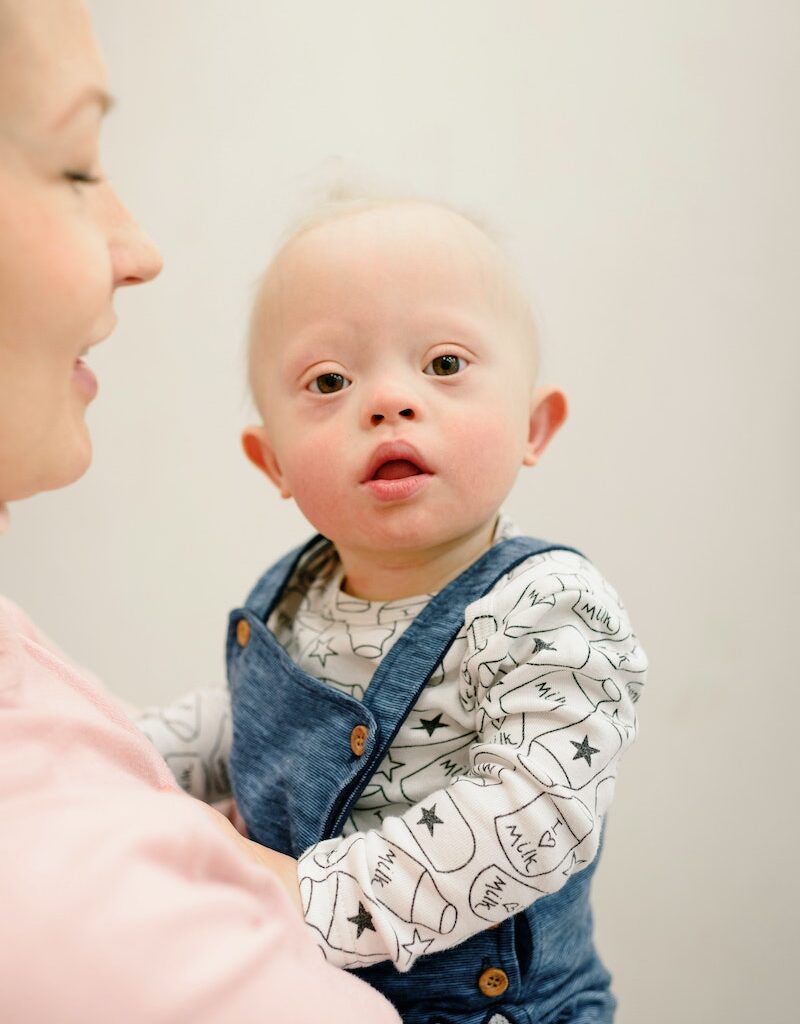If you’ve just learned that your unborn baby has down syndrome, you may be feeling a range of emotions – from shock and confusion to sadness and fear. It’s natural to have many questions about Down syndrome and what it means for your child. This guide will provide information about Down syndrome and offer support as you welcome your new baby into the world.
What is Down Syndrome?
Down syndrome is a genetic disorder caused when an individual has a full or partial extra copy of chromosome 21. This additional genetic material alters the development of the individual, causing a range of medical and cognitive problems. The most common physical features of Down syndrome include low muscle tone, short stature, and an upward slanting of the eyes. People with Down syndrome also tend to have mild to moderate intellectual disabilities and slower social and motor development.
There is no cure for Down syndrome, but early intervention programs can help improve developmental outcomes. People with Down syndrome typically have a lifespan of around 60 years, although this can vary depending on the severity of health problems. With continued advances in medical care, people with Down syndrome are living longer and healthier lives than ever before.
Physical Attributes

All babies are special, but those with Down syndrome have some extra unique physical attributes. For example,
- They often have almond-shaped eyes, small noses, and a single crease across the palm of their hand.
- Small head or features (such as hands, fingers, mouth, and ears).
- A high rate (35 to 50 per cent) of congenital heart defects – your child should have an echocardiogram within the first two weeks of life.
- Additionally, they tend to have low muscle tone and short stature.
However, it is essential to remember that every baby with Down syndrome is unique and will not necessarily have all of these physical characteristics. Regardless of their appearance, all babies with Down syndrome are beautiful and deserve to be loved and accepted for who they are.
What will life be like for a child growing up with Down syndrome?
Though each individual experiences Down syndrome differently, some commonalities can give a glimpse into what life may be like for a child with this diagnosis. Many children with Down syndrome have developmental delays, which can range from mild to severe. This means they may reach milestones such as talking, walking, and potty training later than their peers.
Down syndrome can also cause cognitive delays, impacting a child’s ability to learn and process information. In addition, children with Down syndrome are at an increased risk for certain health conditions, such as heart defects and hearing loss. Though Down syndrome presents challenges, many people with the diagnosis lead happy and fulfilling lives. Children with Down syndrome can reach their full potential with early intervention and support.
Should I do anything different to prepare for my baby’s birth?

As you probably know, every pregnancy is different. And while many things are out of your control, you can also do several things to help ensure a healthy pregnancy and delivery. If you’re expecting a baby with Down syndrome, you may wonder if there’s anything special you need to do to prepare for the birth.
The good news is that, in most cases, the answer is no. Like any other pregnancy, it’s essential to eat a nutritious diet, exercise regularly, and see your doctor for regular checkups. Of course, every pregnancy is unique, so be sure to discuss any concerns you have with your healthcare provider. You’re sure to have a happy and healthy delivery with some preparation and care.
Are there different varieties of Down syndrome disorder?
There are three different types of Down syndrome, each with its own symptoms and associated health risks. The most common type, trisomy 21, occurs when an individual has three copies of chromosome 21 instead of the usual two. This type accounts for 95% of all Down syndrome cases. Mosaic Down syndrome is much less common, occurring in only 1% of cases. It is caused by an error in cell division that results in some cells having the usual two copies of chromosome 21 while others have three copies.
The third type, translocation Down syndrome, occurs when part of chromosome 21 breaks off and becomes attached to another chromosome. This type accounts for 4% of all Down syndrome cases. Although there are different types of Down syndrome, all individuals with the disorder share specific physical characteristics, such as low muscle tone, short stature, and an upward slanting of the eyes. In addition, all individuals with Down syndrome have some intellectual disability. However, the severity of symptoms varies from one individual to another. Nevertheless, with early intervention and specialized support, many people with Down syndrome lead happy and fulfilling lives. Thanks for reading😊

